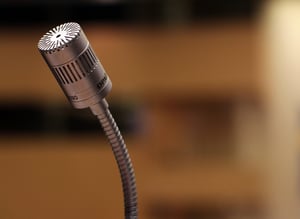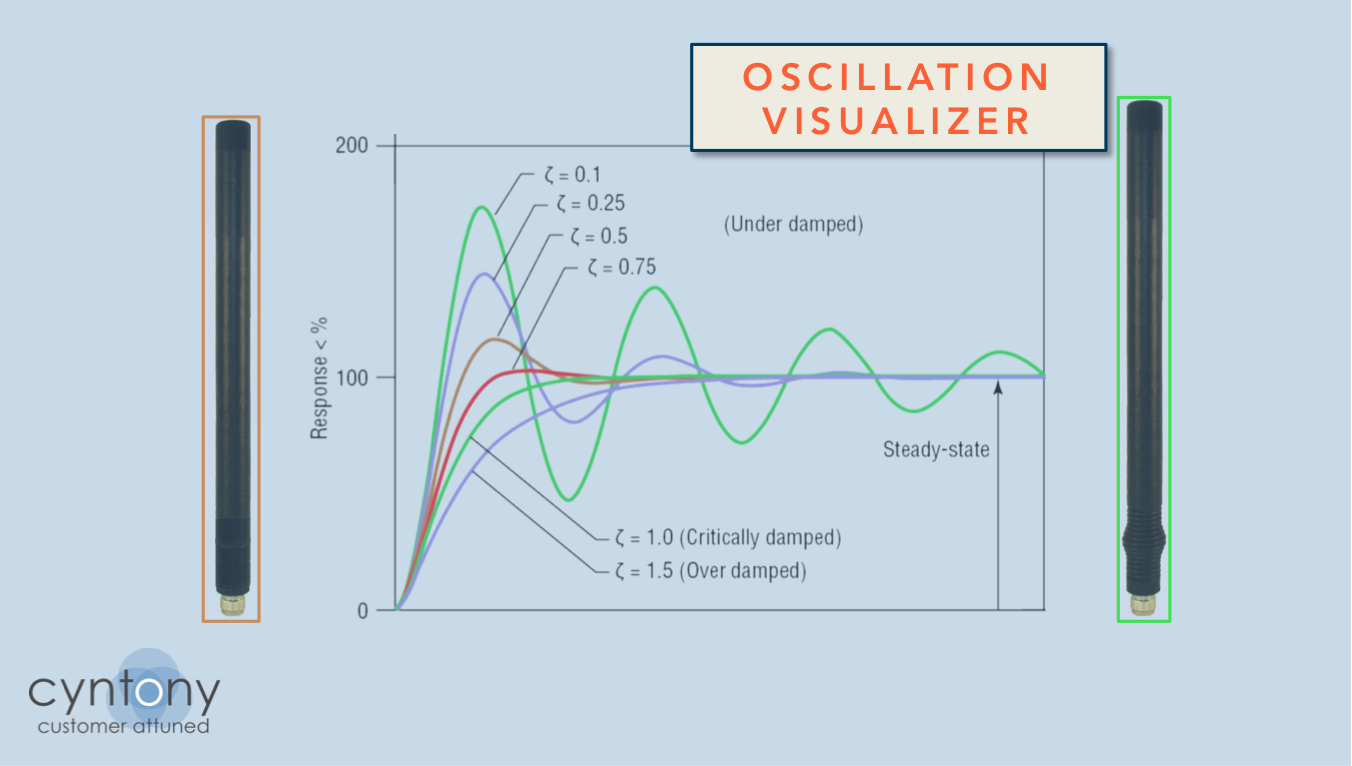Manpack antennas that lack flexible connections to electronics housings are destined for short lifetimes. There are a few options for adding the needed flexibility, but this method is the most effective.
Flexible Manpack Antennas
The rigors of real-world communications and counter-measures systems require a means to mechanically decouple the antenna and the transciever—or the antenna will surely be broken off by an obstacle. Traditionally, designers have used a coiled steel spring or flexible gooseneck. Our supplier COJOT has a better solution.
The Old School: Goosenecks and Steel Springs
Goosenecks are certainly useful for the antenna-electronics  interface. Alas, like an old-school lectern microphone holder, they move to a new position easily and hold it, but do not return to the original orientation on their own.
interface. Alas, like an old-school lectern microphone holder, they move to a new position easily and hold it, but do not return to the original orientation on their own.
Optimal antenna performance usually requires the antenna to maintain a preferred position. Steel springs are great for allowing deflection, but recoil can be hazardous to the operator and equipment as the antenna returns to its resting position.
Surprisingly, designing a steel spring for antenna lateral deflection and recovery is quite tricky. Many an unlucky mechanical engineer tasked with this challenge has been reduced to tears while muttering something about energy going as the fourth power and stiffness as the third power of some such parameter or other.
(Just ask anyone who has had to make a vehicle antenna to survive the dreaded oak beam test!)
Antenna Oscillation
Happily, the problem of antenna survival on a manpack system is a bit easier, but challenges remain for steel springs. They tend to oscillate in an underdamped way after a disturbance, such deflections are represented by the green trace in the visualizer graph below.

An ideal spring for a manpack antenna would deflect easily when encountering an obstacle, but quickly recover to its rest position with a minimum of oscillation, as in the orange or brown trace above.
COJOT Rubber Spring Technology
COJOT has solved the problem of floppy springs with their rubber spring technology. Antennas such as the WD528RQ come equipped with a lightweight rubber spring that provides great flexibility and damping.
View the following video to see the rubber spring in action, next to a steel spring equipped antenna.
Clearly, rubber beats steel.
Operators will surely appreciate a critically damped rubber spring, rather than getting whacked in the head by a steel spring equipped manpack antenna!
It's like one of those superhero smackdowns, who'd win: Elastigirl or Superman? I'd bet on the lady.
If you are interested in finding out more about this calming technology, contact us for a mechanical discussion. I'd be happy to share some war stories from my oak beam test travails.




